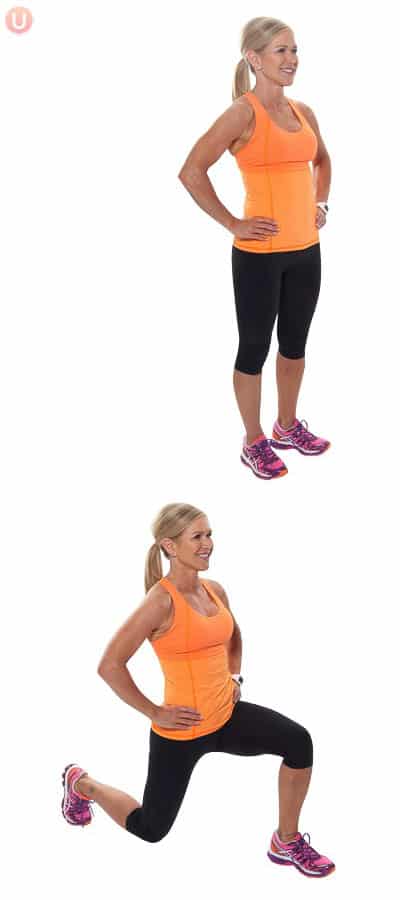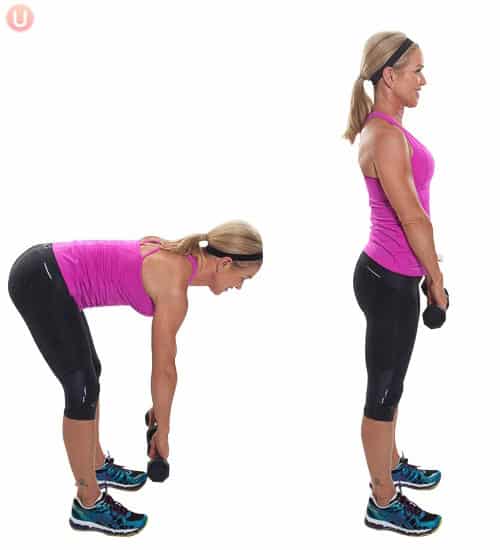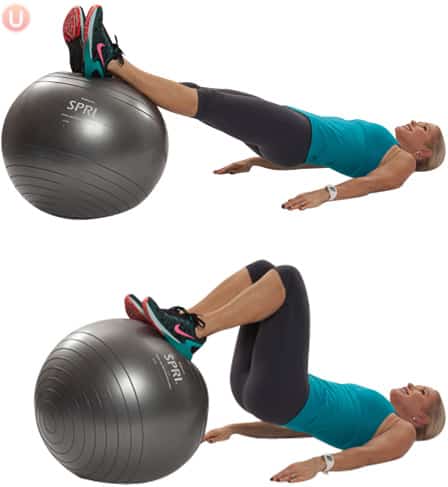Discover five effective squat alternatives for bad knees that target your lower body muscles while minimizing knee strain. Improve strength and stability with these safe exercises.
Working your legs is essential for your overall fitness! After all, your legs not only move you, but as the largest muscles in your body, they help you perform those big calorie-burning exercises which bump up your metabolism.
The problem is that bad knees can get in the way—and they’re a common problem. One study from Gallup-Healthways found that 26% of the adult population in the United States suffers from knee pain.
Injuries, surgeries, arthritis, and runner’s knee—there are many reasons you might be experiencing knee pain, but it should never cause you to skip leg day. I’m going to show you the best exercises for bad knees so you can strengthen your legs without putting stress on your knees.
Follow along with this video or read the exercises below as I show you the five great squat alternatives for bad knees, or people who just don’t like squats ; ).
If you’re looking to rebuild knee strength carefully, check out my 10 exercises for bad knees which focus on carefully strengthening and toning your legs with little to no strain on your knee joints.
[adthrive-in-post-video-player video-id=”kW9yUMDJ” upload-date=”2020-07-24T22:45:18.000Z” name=”5 Exercise Modifications For Bad Knees and A Low-Impact Workout Plan” description=”Your workout with five great exercise modifications for bad knees! Try this workout and make your knees happier, while still working up a sweat! ” player-type=”static”]
1. Wall Squats
Wall squats are a great alternative to regular squats for those with knee issues because they reduce stress on the knees by providing support and cushioning with the back against the wall.
These squats still effectively work the quadriceps, hamstrings, and glutes while improving balance and core strength, making them beneficial for maintaining lower body muscle tone without aggravating knee pain.


How to Perform a Wall Squat
- Lean slightly back against a wall with your feet shoulder-width apart in front of you and begin your squat.
- Not only will this take some pressure off your knees, but you’ll also be able to adjust the move on the fly to suit your own strengths and weaknesses.
- Get a feel for this and then add some dumbbells in your hand to make it harder.
Tip: Choose your range of motion—go lower if you can, but stay higher if your knee pain kicks in. The key is to sit back as you squat, keep legs hip width apart, and focus your weight in your heels!
The reverse lunge exercise is a good alternative to regular lunges for those with knee issues because they place less pressure on the front knee by shifting the weight backward. This exercise targets the quadriceps, hamstrings, and glutes, and is beneficial for building lower body strength while minimizing strain on the knee joints.


How to Perform Reverse Lunges
- Stand tall with your feet hip distance apart.
- Take a large step backward and lower your body toward the floor. Both legs should be bent at a 90-degree angle at the bottom of the lunge.
- Rise back to start and repeat.
Tip: Pay attention to your glutes. You should feel this move in your rear end and put very little weight into the leg that goes behind you.
The deadlift move is a good alternative to regular squats for those with knee issues because they emphasize hip hinge movement rather than knee flexion, reducing stress on the knees. They primarily work the hamstrings, glutes, and lower back, offering a powerful way to build lower body and core strength while minimizing knee strain.


How to Perform Deadlifts:
- Start standing with feet hip distance apart and dumbbells resting in front of thighs.
- Tighten your abdominals and keep a flat back as you bend the knees slightly, lowering the dumbbells towards the floor.
- Squeeze the glutes and use your hamstrings and legs to lift and return to your upright position.
Tip: Use heavy weights—either barbells or dumbbells—since you have many muscles recruited to do this lift. Keep your knees slightly bent and legs hip width apart – but do all the work in your abs and glutes.
The glute bridge exercise is an excellent alternative to regular squats for those with knee issues because they engage the glutes and hamstrings without placing any strain on the knees. This exercise helps strengthen the lower body and core while improving hip stability, making it beneficial for maintaining muscle tone and reducing knee discomfort.


How to Perform a Glute Bridge:
- Lie on your back with knees bent and feet flat on the floor close to your glutes. Your knees should be in line with your hip bones.
- Place your arms flat on the floor at your sides and tuck your shoulders under your back.
- Press your palms into the ground as you raise your hips, squeezing your glutes and abdominals. Keep your neck relaxed on the mat.
- Continue to move your hips up and down for 30 seconds.
Tip: Try single leg glute bridges too! Isolating one leg will target the hamstrings and give you an extra challenge once you’ve mastered traditional glute bridges.
Performing stability ball hamstring roll-ins are a good alternative to regular squats for those with knee issues because they target the hamstrings and glutes without involving knee flexion, thereby reducing knee strain. This exercise also enhances core stability and balance, making it beneficial for building lower body strength while protecting the knees from excessive stress.


How to Perform Stability Ball Hamstring Roll Ins
- Begin lying on back, arms by side and feet on top of stability ball.
- Squeeze glutes and abs and lift body up so you are in a straight line with only shoulders and head relaxed on mat.
- Pull heels toward glutes rolling ball in, then push the ball back out. Continue to pull ball in and out for desired number of reps. Slowly lower body back to the mat.
Tip: Start by lifting and lowering your hips with your feet on the ball. One you have the strength to do that, you can progress to the roll-in.
Also, expect cramps! It happens during this move, primarily due to the weakness of the hamstring muscle. Hang in there. It will get better!
Looking for even more exercises that are easy on the knees? Try 12 Minute Low Impact HIIT Workout for Bad Knees!
